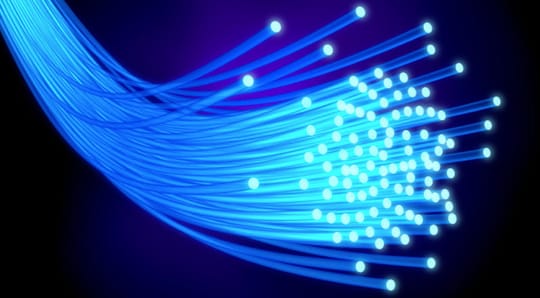
How is Fiber-To-The-Home Benefitting All Stakeholders?
Introduction
Fiber-To-The-Home (FTTH) or Fiber-To-The-Premises (FTTP) has clear advantages for the end-user because it can provide higher bandwidth, and better reliability than broadband services that have ADSL or cable as the underlying technology – both now and in the foreseeable future.
The advantages for the end-user translate into benefits for the service provider, because they help the service provider to attract and retain customers. However, the potential upside to the service provider extends further, and also includes new revenue opportunities, lower operating costs, central office consolidation, and a future-proof network infrastructure guaranteeing ease of upgrade in the future.
FTTH will also be an enabler for considerable social, environmental and economic benefits – and these benefits are already tangible in countries that have adopted fiber over the past decade, such as Sweden. For government, local authorities or communities, these benefits may represent compelling arguments for fiber in their own right. Commercially driven organisations may also be able to capture a financial benefit from these so-called network externalities, for example, by winning public funding, or signing up a healthcare provider as a core customer.
End Users Benefits
The main selling point of FTTH is bandwidth – the amount of data that can be carried over the connection in a given amount of time. FTTH offers the highest available bandwidth of any technology, in both downstream (from the internet to the end-user) and upstream (from the user to the internet) directions.
Today users with a 100Mbps FTTH connection can download content over 10 times faster than users with a typical 8Mbps ADSL connection.
Several other access network technologies such as ADSL2+, VDSL2 and DOCSIS 3.0 are often touted as “next-generation broadband”, and promise increased speeds, but FTTH demonstrates both long-term and short-term advantages. Although headline speeds are eye-catching, it’s important to understand some of the other factors that impact end-user service, beyond the headline speed.
Broadband marketing had typically focused on downstream bandwidth, but upstream bandwidth became increasingly important as applications that require two-way video sharing become commonplace, and cloud-based services proliferate. Not only does FTTH offer the highest upstream data rates, it also opens the way to symmetrical bandwidth.

Service Provider Benefits
FTTH is often quoted as being a “future-proof technology” but what does this really mean? FTTH requires installation of a fiber connection to each home or building, in order to deliver communications services currently provided over copper cable. The life-time of the fiber cable is expected to be 30 years or more – the cable itself is just plastic and glass, which is robust and degrades extremely slowly. The fiber in the ground has virtually unlimited capacity, so bandwidth upgrades only require changes to the equipment on the ends of the link.
The active equipment on the ends of the link has a shorter lifespan – typically seven years – but this is true of any broadband technology. FTTH equipment is available today that supports 100Mbps or even 1Gbps to end-users, and further technology generations are possible. In contrast, alternative technologies like VDSL and DOCSIS 3.0 are already pushing the limits as far as copper cabling is concerned – copper that is, in the majority of cases, far older than 30 years.
Incumbent operators, while historically committed to their approach, nevertheless can see the writing on the wall, and many are planning FTTH deployments in coming years. Both traditional telecoms operators and cable TV providers will eventually drive fiber all the way to the home, or go out of business: all recognise fiber as the “end game”.
Another motivator for service providers is that FTTH networks have significantly lower operational costs (OPEX) than existing copper or coaxial cable networks. FTTH networks consume less electricity – some reports put the figure at 20 times less than HFC or VDSL. Network operation and maintenance can be simplified by full automation and software control, so fewer staff can be employed. In addition, maintenance costs are typically reduced because there is no active equipment in the field to maintain, and optical components have better reliability.
Verizon in the US has reported that its FiOS FTTH network showed a decline of 80 percent in network trouble report rates, and that customers are more satisfied with their service because it is more stable and suffers from less downtime.
Higher customer satisfaction tends to lead to improved customer retention and lower churn, which also helps to reduce OPEX – it’s cheaper to hang onto an existing customer than to recruit a new one.
A 2008 study on NGA service portfolios commissioned by the FTTH Council Europe also showed that FTTH operators collected 30 percent higher average revenues per user – not because their offerings were intrinsically more expensive, but because customers subscribed to more services.
The ability to offer new services is a key attraction for service providers, who want to stay ahead in a highly competitive environment. The entertainment services segment is extremely dynamic and has been driving consumer adoption of new technology. For example, IPTV service subscribers increased to around 21 million worldwide during 2008 and a growth rate of 28 percent is forecast to continue for at least the next 5 years. With associated revenues of around $6 billion (€4 billion), this is an important and growing revenue stream for established and new entrant service providers alike.
HDTV service is a fertile area for new business strategies because it provides a differentiator for service providers. Even in developed markets like the US, which has 61 percent of the global total of HDTV households, 43 percent of households either don’t have or don’t watch HD content and this represents a considerable market opportunity. With 150-inch displays already on the market, it is perhaps only a matter of time before films are premiered directly to the home on IPTV, instead of a cinematic release.
Community Benefits
Communities with FTTH can obtain genuine advantages because they will be able to access a wider range of internet services. Examples of potential benefits that FTTH networks can generate include:
- boosting economic growth and increasing the global competitiveness of the community’s business base;
- enhancing a community’s ability to attract and retain new businesses;
- increased efficiency in the delivery of public services, including education and healthcare;
- enhancing the overall quality of life of the community’s citizens, by increasing the opportunities for communication; and
- reducing traffic congestion and pollution.
Quantifying these benefits in isolation is challenging. A number of studies have observed a statistical connection between higher broadband adoption and an increase in economic prosperity at both local and national level. Evidence-based studies on FTTH have not yet been carried out because the technology has not been mainstream for long enough; it is anticipated that real-world analysis on the economic impact of FTTH will be carried out in due course. However, several reports have attempted to make sensible predictions on the impact of FTTH networks on job creation and GDP.
A study by Ovum for the FTTH Council Europe looked at the socio-economic benefits of FTTH across different communities in Sweden, and found evidence that FTTH has a positive influence on health, education and other public services. For example, in Hudiksvall, a town on the Baltic Sea coast with around 15,000 inhabitants, there was a clear link between rollout of fiber to the community, and the ability to attract new businesses to the area. The study suggests the impact will be greatest in rural areas where there are limited local resources and end-users face significant travel requirements.
It has also been calculated that usage of FTTH-services can have a positive impact on the environment. The FTTH Council Europe commissioned life-cycle assessment experts Price Waterhouse Coopers/ Ecobilan to study the environmental impact of the deployment of a typical FTTH network. The results showed that the energy and raw material used to produce the equipment, transport it and deploy the network is easily compensated by FTTH-enabled services like teleworking, fewer miles travelled for business, and reduced long-distance transport of patients.
The study found that the environmental impact of the deployment of a typical FTTH network will be positive in less than 15 years compared to if the network had not been built. Intelligent deployment using existing ducts, and sewers, where available, can further improve the positive environmental impact of FTTH. The FTTH Council North America asked Ecobilan to calculate results tailored to the circumstances of the USA, which showed environmental pay back in just 12 years – mostly due to the ready availability of aerial cable.
It may be difficult for service providers to capture the financial value of these externalities directly in the form of service fees. However, other parties involved in the network deployment may take these benefits into consideration when making decisions. For instance, the potential social and economic benefits for the community could help you to gain local support for the project, which could help to smooth the deployment process locally, and result in more customers signing up to receive services. The business case should address all alternative drivers and methods for funding the network rollout.
Benefits to Real Estate
Residential connectivity over optical fiber is becoming ubiquitous. Record numbers of large and small network providers have deployed fiber-to-the-home systems, delivering voice, video and data to living rooms and home offices all over the country. In new construction, or “greenfield” deployments, real estate developers can choose between traditional twisted-pair copper/coax-based network infrastructures or a future proofed, fiber-based network. When starting from scratch, optical fiber has become the clear choice over copper, given its lower installation costs and superior capacity. Homes in FTTH-connected communities command a price premium over homes in communities without optical connectivity. For a typical investment of about $1,200 per home passed for FTTH, developers can expect to realize a premium between $4,000 and $15,000 per home sale. In short, FTTH offers the developer/builder the opportunity to make more money per home, while offering the home buyer an improved lifestyle. This will provide insight into the necessary requirements to integrate FTTH design into the real estate developer’s process for maximum effect.
Despite optical fiber deployment becoming commonplace, designing the neighbourhood fiber network often comes late in the design process. Integrating the FTTH network planning into the utilities construction plan, and allowing for minor modifications to lots and streets, will lower cost, increase operating efficiency and simplify long-term maintenance. Many of the current neighbourhood design trends are aimed at minimizing paved roads in developments. Since 98 percent of all developer-driven FTTH systems are placed in conduit – and primary conduit routes typically follow alongside the main roads – minimizing road lengths results in cost savings on all utilities’ infrastructures. Understanding the basics of FTTH networks, both as a business case and as a design process, will ensure successful FTTH network deployment.
Author Bio
Adarsh Kumar Arya is a highly skilled Product Manager & Solution Sales Expert and an experienced technical writer passionate about communicating complex information clearly and concisely. With a strong background in Digital Technologies and a keen eye for detail, Adarsh excels in translating technical concepts into user-friendly documentation.


No comments yet